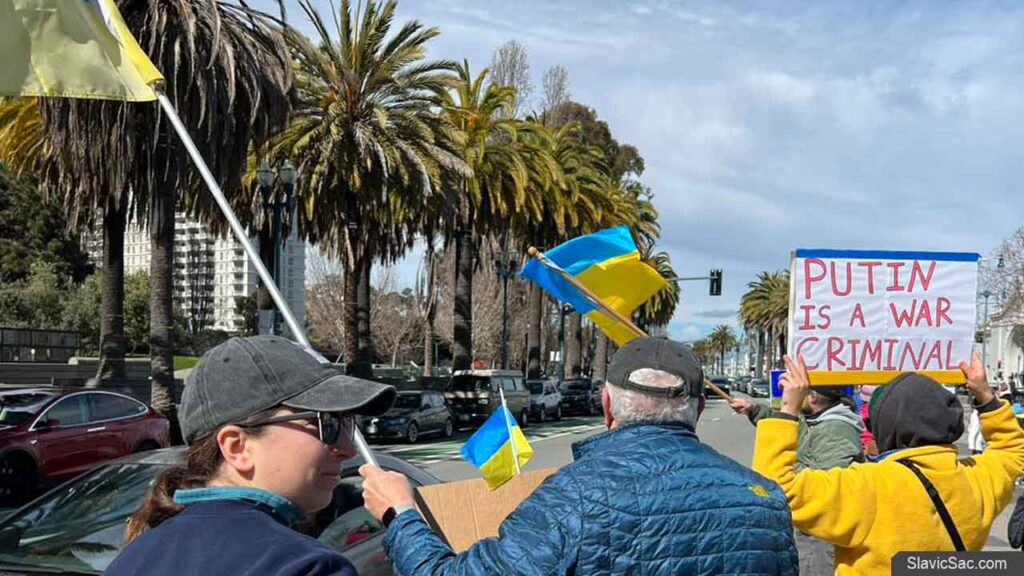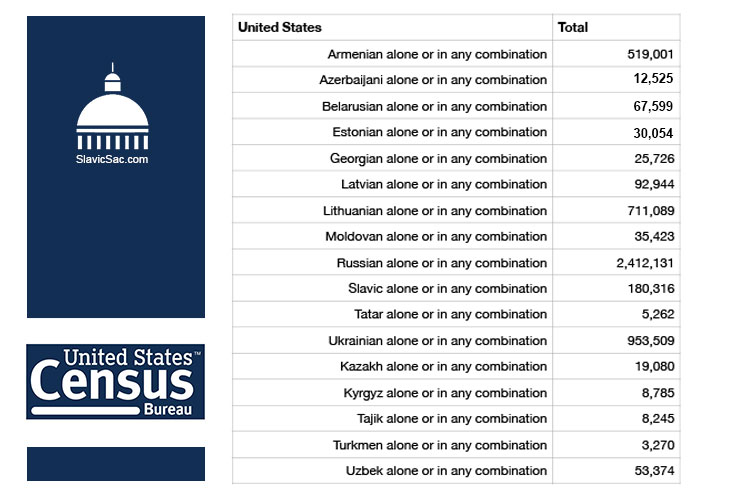“And we must stand with our Jewish community against it. My office will make clear that there is zero tolerance for hate in San Francisco and there will be no safe haven for those who perpetrate these crimes,” said San Francisco District Attorney Brooke Jenkins.
The Russian-language Jewish community of San Francisco was shaken by a shooting at a synagogue located on the 2600 block of Balboa Street in the Richmond district of the city on February 1, 2023.
A Caucasian man opened the door of the Schneerson Center, a small synagogue primarily serving Russian-speaking Jews for the past 33 years (the synagogue changed several locations during this time). The man entered the middle of an evening study session on Lubavitcher Rebbe Menachem Mendel Schneerson, the 20th-century Ukrainian-born sage.
“We didn’t pay attention to him; he just looked like us,” said Rabbi Bentziyon Pil over the phone. “We never saw him in our synagogue before… I suggested that he sit.”
The visitor spoke in Russian and started firing several blanks from a replica pistol. First, he shot six times to the left in the direction of the Torah ark, then eight shots to the right in the direction of the people seated. Luckily, the shots didn’t hit anyone or anything.
“We didn’t expect that; we were scared. There were many elderly people who we worried about because they could have health issues following the scary incident,” recounted Rabbi Bentziyon Pil. “Nothing like this has ever happened to us in the entire history of our synagogue.”
Two days later, with help from the FBI, the San Francisco police arrested 51-year-old Dmitri Valerie Mishin as a suspect. He was charged with two felony counts of making threats obstructing the exercise of religion, one misdemeanor count of disturbing a religious meeting, and five misdemeanor counts of brandishing a replica firearm. Additionally, the prosecutors alleged that the felony threats to obstruct the exercise of religion were hate crimes committed because of the religion (Judaism, in this case) being practiced.
Presiding Superior Court Judge Loretta M. Giorgi tossed out the hate crime charges, determining they were not sufficiently supported. This decision to drop the hate crime charges was criticized by the Anti-Defamation League (ADL).
A Twitter account with Mishin’s name showed a history of antisemitic posts. In numerous posts, a man who looked like young Mishin was seen wearing a military uniform with a Nazi pin. The account also published a video of a fire burning outside the Schneerson Center at night, posted just days before the shooting. This Twitter account is no longer active.
“I feel very upset that the guy [the shooter, according to Slavic Sacramento] is one of our immigrants,” said Rabbi Bentziyon Pil. (The man was a Russian-language immigrant.)
Rabbi Bentziyon Pil shared that throughout his life in San Francisco, he faced a few cases of hate behavior toward him. Some strangers shouted curses and insults as he walked down the street.
Antisemitic incidents increasing
The incident stunned not only the Schneerson Center and the Russian Jewish community but also revealed that anti-Semitism is real and never has gone away. In the Anti-Defamation League (ADL)’s Annual Audit of Antisemitic Incidents (2022), the data showed that physical assaults increased by 26%, and visibly Orthodox Jews were heavily targeted. Also, according to the report, 2022 was the worst year for antisemitic incidents since 1979 when ADL began publishing this information in the annual audit. There was an increase of 36% in antisemitic incidents in 2022 compared to 2021.
Incidents increased in each of the major audit categories: antisemitic harassment increased 29% to 2,298 incidents, antisemitic vandalism increased 51% to 1,288 incidents, and antisemitic assaults increased 26% to 111 incidents. The vast majority of antisemitic assaults (107 out of 111) were perpetrated without the use of a deadly weapon.
According to the audit, the dramatic increase in antisemitic incidents in almost all categories in 2022 cannot be attributed to any one cause or ideology. Significant surges in incidents included high volume increases in organized white supremacist propaganda activity (102% increase to 852 incidents), K-12 schools (49% increase to 494 incidents), and college campuses (41% increase to 219 incidents).
“True, we are observing more anti-Semitism incidents,” said Rabbi Shimon Margolin, CEO of the Russian-speaking Jewish Community of the SF Bay Area. “You can frequently see swastikas painted on the walled fences of Jewish schools or find antisemitic fliers by their doors. Anti-Semitism is a disease of society and must be cured.”
“All Jewish schools across the US have security at their entrances. All of them. There are federal and state grants devoted to providing security to organizations that have been attacked the most; the majority of the grants were received by Jewish organizations. I think that tells a lot,” he continued.
In talking about the reasons behind antisemitic incidents, Rabbi Shimon Margolin highlighted two aspects. First, he mentioned that many people confuse the policy of the State of Israel and the Jews living outside Israel. Second, he expressed that the stronger the Jew is connected with Judaism, Judaism traditions, and community events and services, the more hate the person gets.
Rabbi Shimon Margolin and Rabbi Bentziyon Pil were in agreement about everyday anti-Semitism from Russian-language immigrants, inherited from the Soviet past, which they have to deal with.
However, Rabbi Shimon Margolin claimed, “Our immigrants are changing under the influence of American society. In general, the society is becoming more tolerant and friendly and not antisemitic. I believe that the surroundings have an impact on a human’s mindset.”
Historical glimpse at anti-Semitism in Russia
California’s Jewish population is approximately 1.2 million, and about 15% are Russian Jews. Rabbi Shimon Margolin and Rabbi Bentziyon Pil estimate that 40,000 to 50,000 Russian-speaking Jews reside in the San Francisco Bay Area, and up to 200,000 throughout California.
Since the late 1960s, between 400,000 and 500,000 Soviet Jews immigrated to the United States. About 40,000 of them came to the San Francisco Bay Area, making this one of the major centers of Soviet Jewish settlements in North America.
Approximately half of these immigrants arrived in the Bay Area between the early 1970s and 1981, when Soviet authorities temporarily halted the outflow. Later, during Perestroika (1987–1991), and then after the dissolution of the Soviet Union, the large-scale emigration of Jews from the former Soviet republics resumed, though the influx has slowed greatly in the last several years.
Anti-Semitism and various restrictions on Jews, such as the Pale of Settlement (formally delimited area of the Russian Empire) existed for two centuries with varying borders in which Jews were allowed to reside permanently. Beyond those territories, Jewish residency was mostly forbidden. This was part of the official policy of the Russian Empire. There was also propaganda of anti-Semitic views and acts of hostility against Jews, including Jewish pogroms.
Jews were also subject to restrictions on freedom of movement, admission to educational institutions, serving in the military, entering the civil service, participating in local government, etc.
The Judeo-Masonic conspiracy theory (an anti-Semitic and anti-Masonic conspiracy theory involving an alleged secret coalition of Jews and Freemasons) was widespread at that time and was strongly supported on the official level.
In Soviet times, the state policy toward the Jews was ambivalent. On the one hand, anti-Semitism was officially viewed as a negative legacy of the “great-power chauvinism” of the Russian Empire. A positive attitude toward Jews also helped to preserve the image of the USSR as the main fighter against Nazism.
Anti-Semitism as part of Soviet state policy arose in the late 1930s, during the establishment of Stalin’s rule, and reached its peak in the late 1940s and early 1950s. This was in particular, a part of a political campaign to “fight against cosmopolitanism.”
However, throughout soviet history, Jews were expelled from many government posts, and a large number of Jews were convicted and executed after numerous trials. The authorities used the anti-Semitic sentiments of the population, trying to demonstrate that every Jew is a traitor. Also, the practice of limited admission to educational institutions and work positions was in force. In addition, many Jewish families had to change their names so that they sounded more Soviet-like. These stipulations simplified the everyday life of many Jews.
Sadly, anti-Semitism still exists in modern Russia and many other former USSR countries. In everyday life, the Judeo-Masonic conspiracy theory got a second wind and is thoroughly fueled by many religious leaders. Many people still use a colloquial but very humiliating word when talking about Jews.
The antisemitism animates Russian President Vladimir Putin’s claim to ‘denazify’ Ukraine. He has long sought to paint Ukraine as a Nazi hotbed, which is a particularly jarring accusation given that Ukrainian President Volodymyr Zelenskyy is Jewish and lost three family members in the Holocaust.
Life after the attack
The Rabbis said that security has always been a top priority for them, however, they have to focus on it even more now so that anyone with bad intentions cannot do any harm to the community.
“Мarginals are everywhere. You cannot blame the whole group of people on one of its representatives,” said Rabbi Shimon Margolin. “Sometimes those are just ill people.”
Meanwhile, Dmitri Valerie Mishin, who attacked the synagogue, has a long history of documented violence in his past. Currently in custody, he pleaded not guilty to the charges against him.
During a court appearance, his 73-year-old mother Ludmila Mishina testified that she and her son were born in the former Soviet Union. She also testified that she considers herself Jewish, except she doesn’t practice the faith anymore, and that her son has mental health issues. He has been a patient at a Richmond District area clinic for decades.
It is noteworthy that recently in California, there is a government program called Stop the Hate, the main goal of which is to assist victims of hate attacks and prevent them. All victims and witnesses of hate incidents and hate crimes can report and are eligible for free hotline support services. California vs Hate is not affiliated with law enforcement, and you can report anonymously.
Any victim of or witness to a hate incident or crime in California can report it and receive support any time using the link above. You can also call 833-8-NO-HATE; (833) 866-4283 Monday – Friday from 9:00 am – 6:00 pm. If outside of those hours, you can leave a voicemail, or you can call 211 to report hate and seek support.
You can currently submit reports online in 15 languages and, when calling the hotline, you can get access to support in over 200 languages. If you want to report a hate crime to law enforcement immediately or you are in present danger, please call 911.
Elena Kuznetsova, SlavicSac.com

This resource is supported in whole or in part by funding provided by the State of California, administered by the California State Library in partnership with the California Department of Social Services and the California Commission on Asian and Pacific Islander American Affairs as part of the Stop the Hate program. To report a hate incident or hate crime and get support, go to CA vs Hate.





